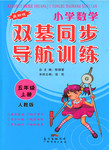题目内容
Coal can be used to ________, so we used to ________ with coal, but today we are used to ________ with gas.
- A.cook; cook; cooking
- B.cooking; cook; cook
- C.cook; cooking; cooking
- D.cooking; cooking; cook
A
【巧解导析】句意为“煤可用来做饭,因此我们过去常常用煤做饭,但今天我们习惯用煤气做饭.”
【巧解导析】句意为“煤可用来做饭,因此我们过去常常用煤做饭,但今天我们习惯用煤气做饭.”

练习册系列答案
 开心练习课课练与单元检测系列答案
开心练习课课练与单元检测系列答案 开心试卷期末冲刺100分系列答案
开心试卷期末冲刺100分系列答案 双基同步导航训练系列答案
双基同步导航训练系列答案
相关题目
 st more than gas-powered cars to operate and
st more than gas-powered cars to operate and